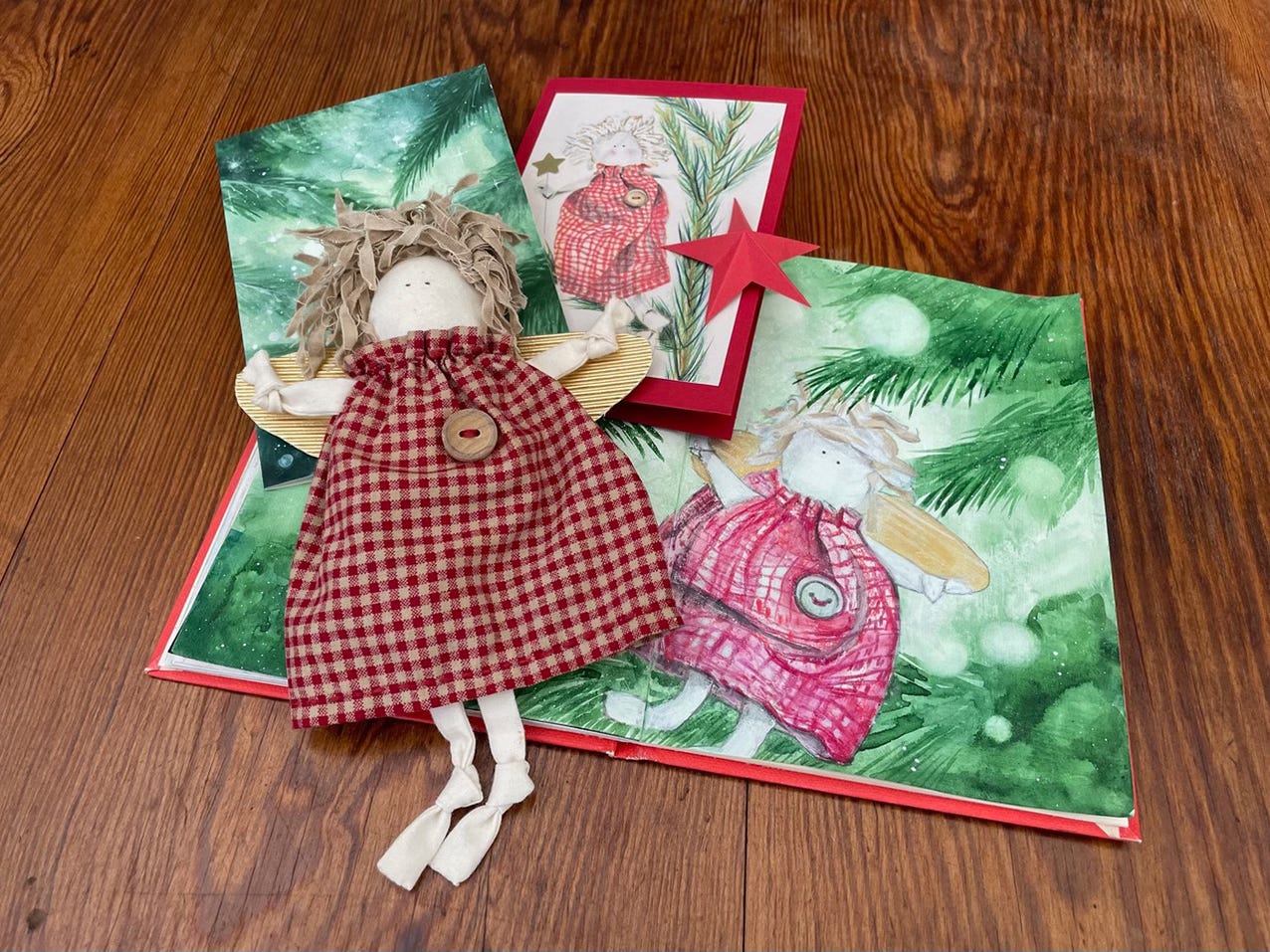
Dear Reader,
When I was around seven or eight my parents had earmarked a patch of land in one of the few parts of their garden which was not already home to goats, sheep, hens or ducks to grow a crop of Christmas trees.
The tiny firs arrived and were planted in a grid. In time people would come and choose their trees, when estimated heights and prices would be discussed, collection dates decided upon, and labels affixed to favoured foliage.
In the fullness of time Dad became designated lumberjack, and my brother and I revelled in yelling ‘timber’ with childish hyperbole every time one of the not-very-tall trees was sawn down.
Not long into December a small tree which Dad had cut down and stuck into a bucket of sand found its way into the back of the Landrover in which my parents would take us to school, schlep sacks of animal feed home from the agricultural merchants or take livestock to market.
A bag of clanking glittery brightness joined it. ‘What’s in there?’ I asked, clambering into the vehicle in my school uniform.
‘You’ll see!’ Dad’s eyes were twinkling.
Twenty minutes later Dad carried the heavy bucket upstairs to my classroom. What a surprise! We had supplied my class with its own Christmas tree! Looking into the bag I found tinsel, baubles and the brightly-coloured festive-shaped lights which we’d used on our tree at home until the previous year, when my parents had switched to using clear bulbs instead.
My classmates and I enjoyed decorating the tree while we chattered excitedly about the decorations which were planned to adorn our homes.
‘Our tree is always red and gold!’ someone said.
And someone else: ‘We don’t have a real tree like this one – ours is made of silver tinsel and wire, and it’s beautiful even before we’ve decorated it!’.
‘My mum doesn’t like tinsel!’ said one of my friends. ‘She says it’s over-the-top.’
Reader, what use are Christmas decorations if they aren’t over-the-top? I rolled my eyes.
My best friend told us that her family had put their tree up on December 1st.
‘Wow, that’s early!’ said another girl. ‘Two weekends before Christmas – that’s when we do ours!’
Shops in the town would have already been doing the hard sell on festive fripperies by November, and the Christmas tree at the town’s war memorial would always put in an early appearance. On the drive home from school in the run-up to Christmas we’d see fairy lights around window frames and catch glimpses of glittery star-topped trees in people’s front room windows.
‘Can’t we put up our tree?’ we’d ask every day. And, every day, ‘not yet!’ would be the answer.
In our front garden, visible to passing traffic, we had a tall, tall fir tree, and a couple of weeks before Christmas Dad would fetch a long string of light bulbs down from the loft. Out would come his ladder and up the tree he’d go.
Lights duly tested and secured, Dad would set a time switch so that they’d always be on when we got home from school.
‘Oh look!’ Mum would say every day as we neared the house. ‘Some really nice people must live here – haven’t they got a beautiful Christmas tree?’

By the last week of term in the chaos of all the games, the class parties and the nativity play most of the children in my class had become tired and ready for a break. As my own excitement for Christmas only grew, their festive cheer was already waning. With the big day still many days away, had Christmas already become too much for those around me?
You see, despite already having the lights on our big tree in the garden, and selling our cut firs to other local families starting weeks before the big day, we wouldn’t put our tree up until the afternoon of Christmas Eve.
It would already be getting dark by the time we switched on the radio to hear the live broadcast of the service of nine lessons and carols from King’s College, Cambridge. We’d fetch the box of decorations from the loft, and once the tricky bits like the lights and golden strings of beads had been attached my brother and I would be encouraged to hang the decorations on the tree. There were red glass baubles all the way from America, and heart-shaped baskets made from woven paper, which for five minutes might have contained foil-wrapped sweets but certainly no longer than that. A dozen brass decorations from the Christmas department in Harrods of Knightsbridge, each representing one of the numbers in the seasonal song ‘The Twelve Days of Christmas’, would swing heavily from the branches, and little festive crackers would be tucked into the prickly angles of the twigs of fir.
A tiny jointed silver fish, a miniature wine bottle no taller than my fingernail and several pairs of glass cherries joined the larger decorations, and we’d use little paper stars in red and gold to punctuate the very tips of the branches as we hummed and sang along to the beautiful carols. Snippy short lengths of a once much-longer star garland would be hung from anywhere that still looked bare.
But the most precious part of the jolly jigsaw was the ornament for the top of the tree.
Regarding us from her lofty perch our fairy had golden wings and a beautiful cloud of fluffy yellow hair. She’d started life as a tiny doll with beautiful eyes and slender arms of fine cotton, and Mum and her friend June had dressed her using scraps from one of June’s terrifically accomplished sewing projects. She wore a sheath of sparkling gold lamé from her neck to her feet, and her sticky-outy skirt was shimmering organza.
Mum had even hand-dyed some carefully washed fleece from our sheep with daffodil flowers to create her pale blonde hair.
The gold-paper wings have been replaced more than once. They would have been cut from the inside of a special box of chocolates, and her coronet of tightly-coiled brass wire would have been taken from the outside of a Christmas cracker or repurposed from another tree decoration. Her wand is a cocktail stick sprayed gold and embellished with the sort of tiny gold-foil star you’d be awarded for good work at school.
Like me, the beautiful gold fairy is well over 40 years old, but in more recent years June made her a younger sister, Mavis, named after a character in Willo the Wisp:1
Mavis is named after Mavis Cruet, the little fairy character in the 1980s BBC children’s animation ‘Willo the Wisp’.
This is the only episode which I could find on YouTube to show you, and although it features Halloween rather than Christmas, if you’ve got a little over four minutes to spend watching it I’m know you’ll enjoy meeting the characters. You’ll find that Mavis Cruet is beyond cute - oh, and that’s Arthur the caterpillar shown in the preview shot above!
There are no sparkles for our Christmas tree fairy Mavis: she wears a very simple gingham dress, and she hasn’t brushed her hair. Her hands and feet are simply knotted cloth, but despite – or even because of – her innocent Cinderella naivety she is just as beautiful as her golden-haired big sister.
Although she has shiny golden corrugated cardboard wings she doesn’t possess a wand, although for this snap, where she sits on our Christmas tree this year, she has borrowed one which I’d made to use as a prop for a Zoom fancy dress party during that 2020 locked-down Christmas.
This year Jim and I decorated our tree exactly a week before Christmas, and Reader, it had felt like perfect timing.
Instead of listening to the festival of nine lessons and carols like we used to do in those early years at home decorating our tree on Christmas Eve, I found an audiobook of Dickens’ ‘A Christmas Carol’ on the BBC Sounds app.
Living in a very rural part of south-east England we would often experience power cuts in our village, with any issues with the dodgy local electricity set-up making no concessions for the festive season.
Mid-morning one Christmas Day in my early teens the power went out mid-morning.

Because our village wasn’t connected to the gas network many households relied entirely on electricity for cooking, but our turkey – enormous, with plenty to go round – remained sizzling in our oil-fired range cooker. Some hasty phone research – ‘Happy Christmas – are you okay with the power cut? – established that some neighbours were away, while others had their Christmas dinner planned for the evening, by which time they hoped the power would have long since been reconnected. Mum rang June. ‘We’re fine. I’ve opened a bottle and lit the fire. See you on the other side!’
Mum knew that our neighbours would have been at the church service in the next village, and gave them a ring at a time she knew they’d be returning home to their dark house and cold oven.
‘Would you like to join us?’ she asked. ‘We’ve plenty of food, and we’d love to see you and the girls.’
They arrived soon after in their Sunday best, their two tiny girls with ribbons in their hair. Together, the eight of us had a wonderful time: there was hot food, good company, a roaring fire and candlelight on what outside was a dark and gloomy-looking December day. Before the daylight waned entirely we took the little girls nearer to the tree to see if we could see which decorations were the prettiest as they glinted in the dim light of the candles.
At that very moment the lights on the tree sparkled back into life, and the girls gasped in delight. Power and light had been restored, and Reader, it was magical.

Now in my late forties I still love the magic of a family Christmas. The golden fairy with fluffy hair adorns the tree at the house I grew up in, and Mavis is sitting comfortably on one of the branches of our tree in a corner of the room at my house in which all six of us had spent the day enjoying both each other’s company and a turkey which I’d roasted – without interruption – in an electric oven.
Whether she has shimmering golden wings and daffodil-dyed hair or just a simple gingham dress and knots for feet, it is not the Christmas tree fairy but the special memories of moments past which will always be lighting the way.
I hope you’re having a wonderful festive season full of whatever you’re choosing to fill it with. Thank you for reading my words in 2023. I’ll see you next year!
Love,
Rebecca
Artist’s notes
I had first drawn Mavis back in 2002 for our family’s Christmas card, when my medium of choice was coloured pencil. Here she is:
For our Christmas card this year I had painted this design in watercolour and gouache; Christmas trees with a flashy-lighty bokeh effect:
It wasn’t much of a leap to decide to make a mixed media mash-up of the two to illustrate this last post for the year of my Art & Treasures 🖼️ series.
I have to say, though, in this busy festive season I had required a little more effort than usual to get going. I started with this simple little thumbnail image:
Here’s my background, with Mavis added in pencil after the fact. I’d prepped the pages in my art journal with gesso, which meant that I had been able to remove the watercolour paint from where I’d wanted Mavis to go.
Time was ticking, and with my much-loved weekly date at the
Friday Write Along with looming, what was a girl to do? Well, this of course:Here’s what my desk looked like an hour later:
Later I added more detail to the fir branches and played around removing circles of paint to reveal white gesso beneath in order to create the bokeh effect of out-of-focus blurry fairy lights in the background. I’m not sure how well I pulled it off, but I thoroughly enjoyed creating this art project, and am grateful for all the memories that interacting with Mavis – June’s fairy – had prompted me to recall.
You’re reading this post right at the tail-end of December 2023, and I’m so grateful to you for following my journey in art and memories over the year. Sending festive love to you and yours, and I’ll see you in 2024!
Rebecca xxx
📚 Reading 📚
📚 Over the course of 2023
has fuelled my reading flame again and again. Every one of her flash fiction stories has kept me hooked right until the final line, her memoir stories inspire and intrigue me, and her travel writing makes my feet itch to move and my cases demand to be packed. If you’re a reader you need LEAVES in your life!📚 I’ve done my best this year to make it to as many of the Friday Write Alongs on
as my diary has allowed. Every Friday host generously gives her time for people all around the world to share space together to write for an hour. This week I didn’t use the Write Along to write, but treated it as a Paint Along instead, and used the time to finish my artwork for today’s post! Here’s a link – hey, perhaps I’ll see you Friday?📚 Regular readers of ‘Dear Reader, I’m Lost' will be no strangers to my ongoing light-hearted correspondence with fellow Brit
of Eclecticism: Reflections on literature and life. He’s kicking off our 2024 canon with his first letter of the year on Wednesday.Why not take just ten minutes now to read this chortlesome rip-roaring ride through the hilarious highlights of our letters of 2023? You’ll find my ‘letterospective’ right here, and it’s not a list of links, but a proper summary, I promise. No additional clicks required!
If you’ve enjoyed reading this post, the twelfth in a monthly series exploring some of my memories in words and pictures, please let me know by clicking the heart. Thank you! You’ll find all the posts in this ‘Art & Treasures’ series here.
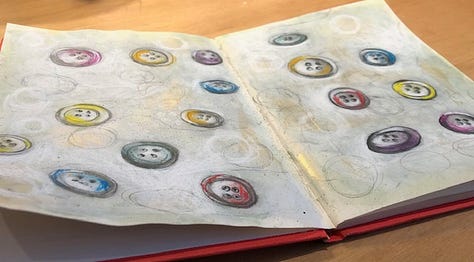

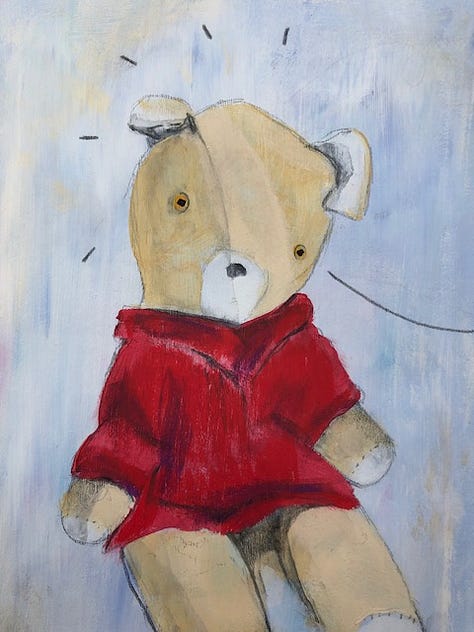
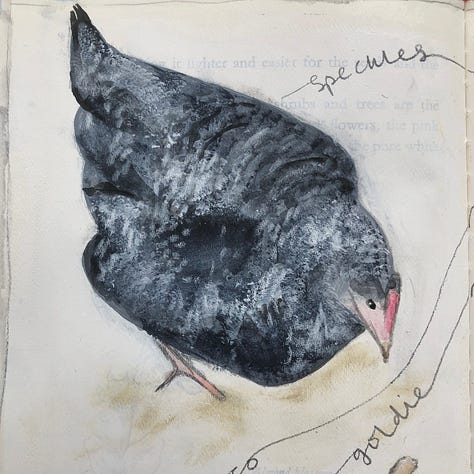
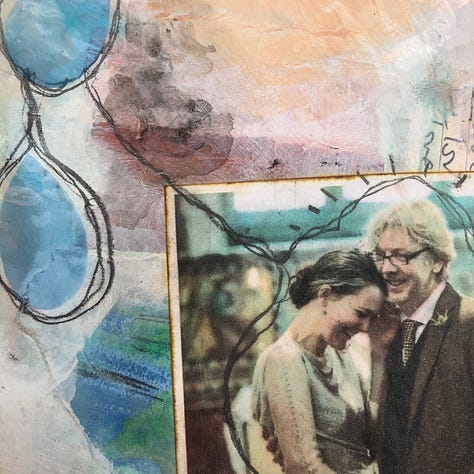
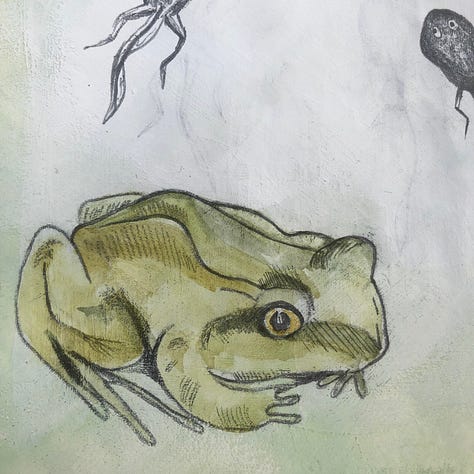
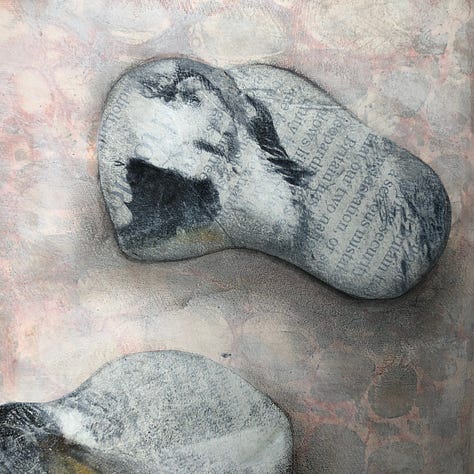


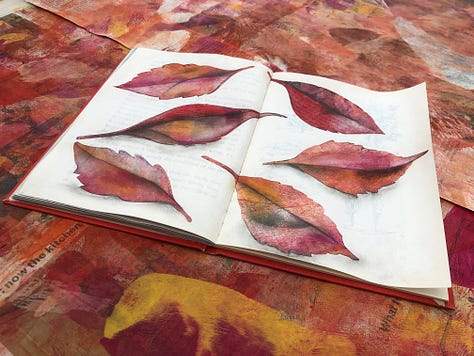


Thank you for reading! If you enjoy ‘Dear Reader, I’m lost’, please share and subscribe for free.
Willo the Wisp (1981)
The series was written and directed by Nick Spargo and produced by Nicholas Cartoon Films, in association with the BBC and Tellytales Enterprises. The character of Willo the Wisp originated in an award-winning educational animation created by Spargo for British Gas in 1975 and the stories were set in Doyley Woods, a small beech wood in Oxfordshire, near the director's home.
Kenneth Williams provided voices for all of the characters. The principal narrator, Willo the Wisp, was a blue floating creature drawn as a caricature of Williams, while the name refers to the ghostly light will-o’-the-wisp from folklore. The other main characters were Arthur the caterpillar, as a gruff cockney; Mavis Cruet, a plump, clumsy fairy with an erratic magic wand; and the principal antagonist, Evil Edna, a witch in the form of a walking, talking television set, who could zap people with her aerials.
Each of the original 26 episodes lasted approximately five minutes and was broadcast at 5:35pm on BBC1. This continued a tradition of short cartoons, such as The Magic Roundabout and The Wombles, being shown on weekdays between the end of the main children's programming for that afternoon and the BBC Early Evening news at 5:40pm.




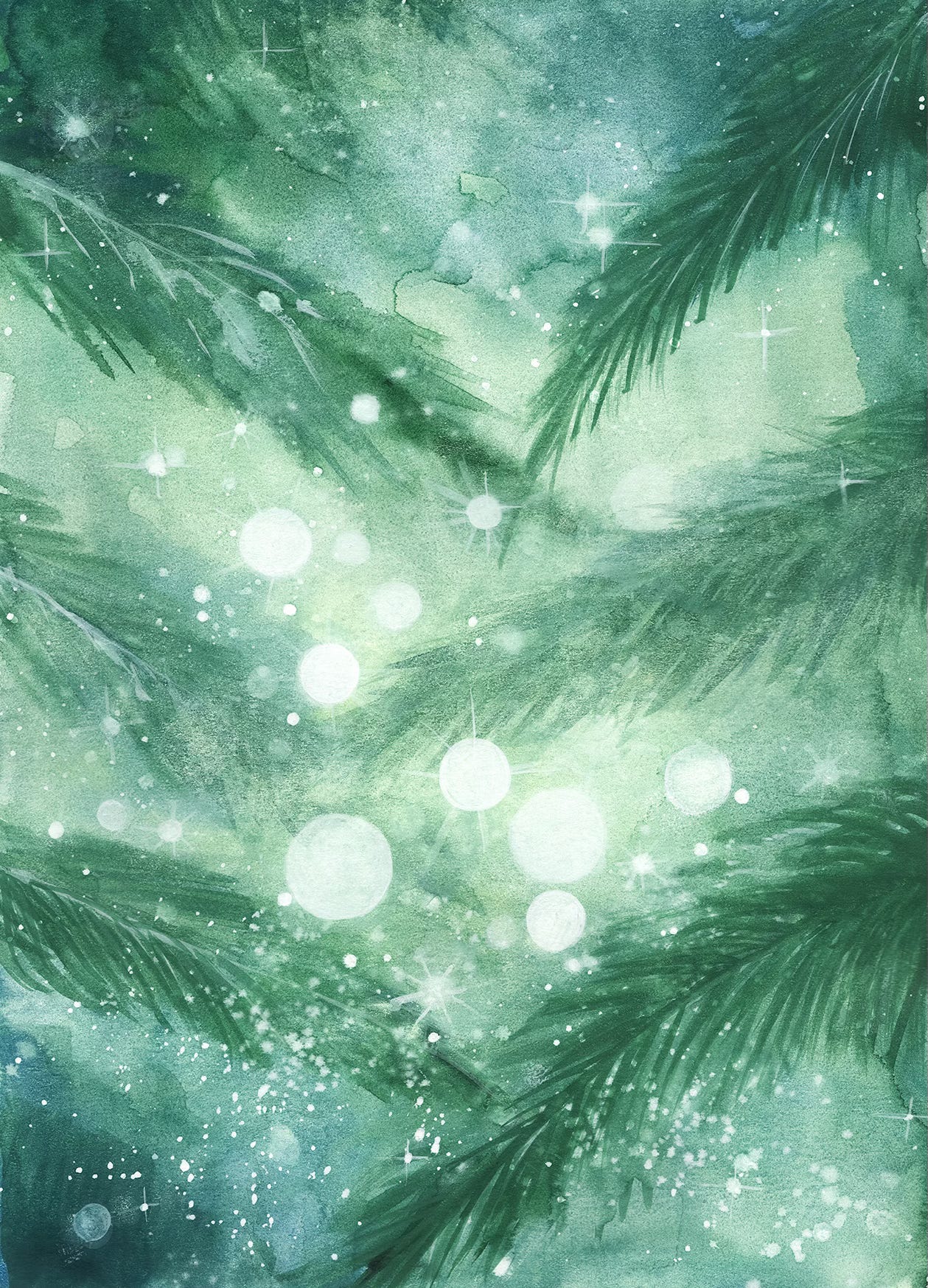

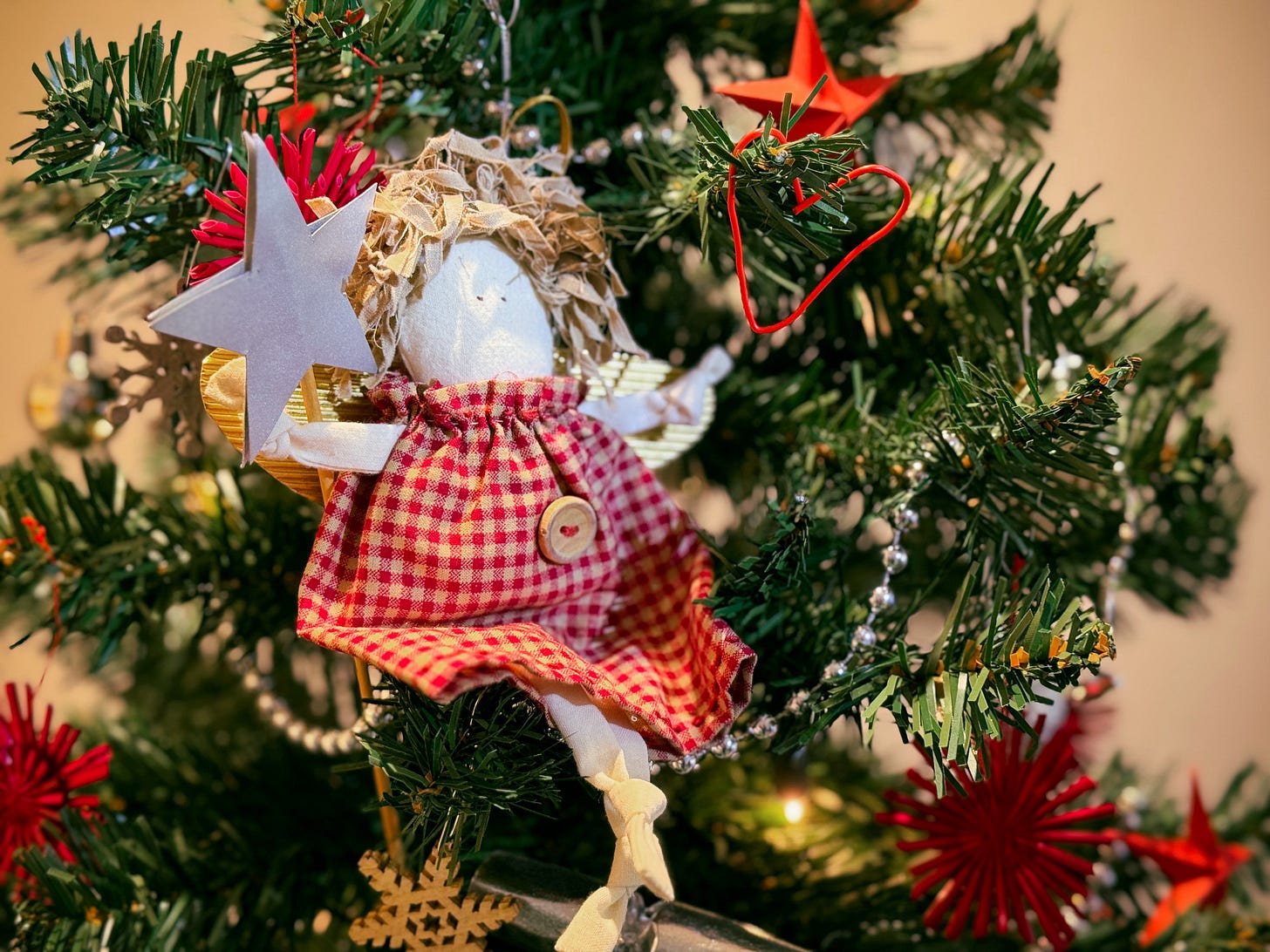


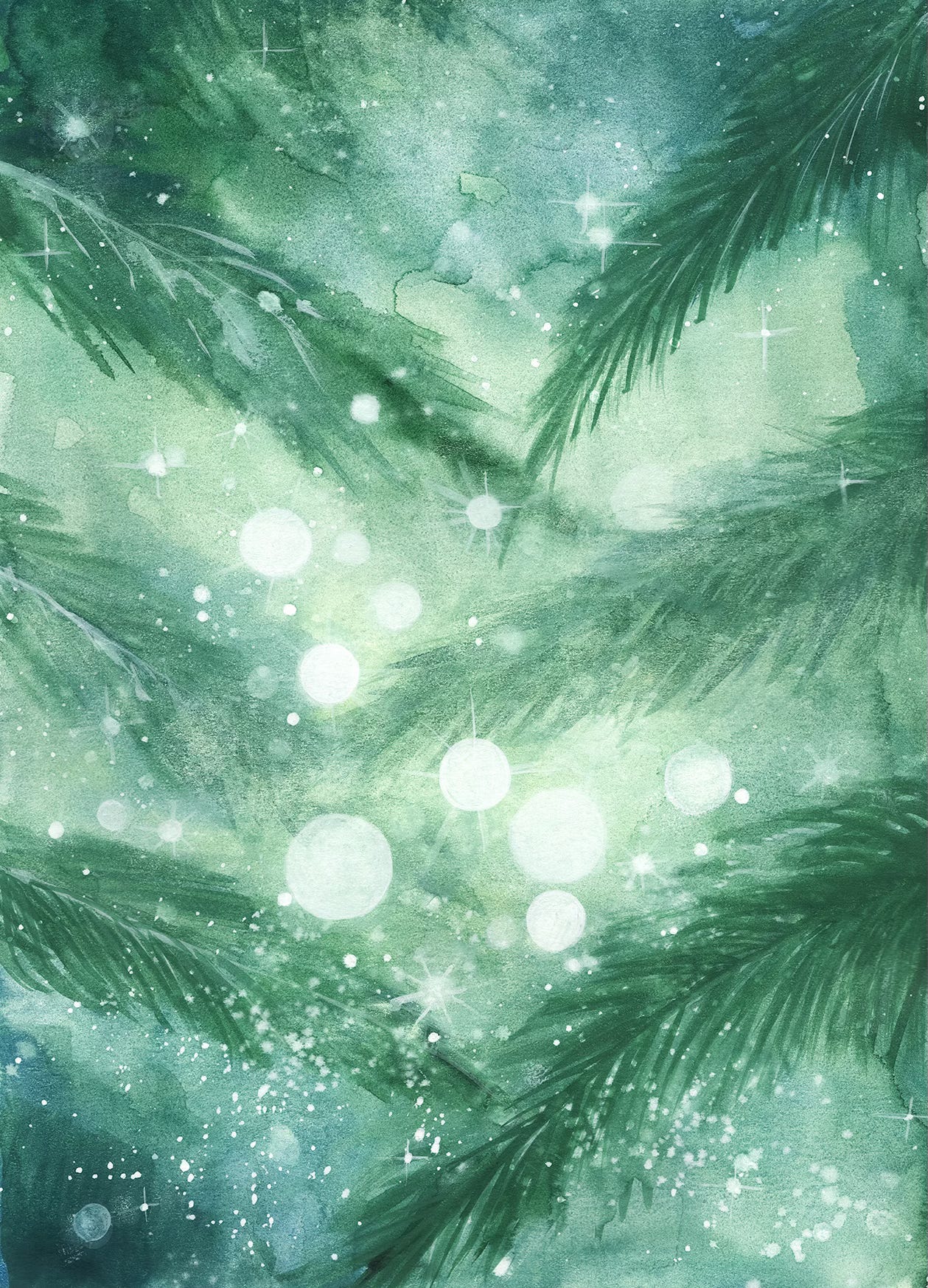


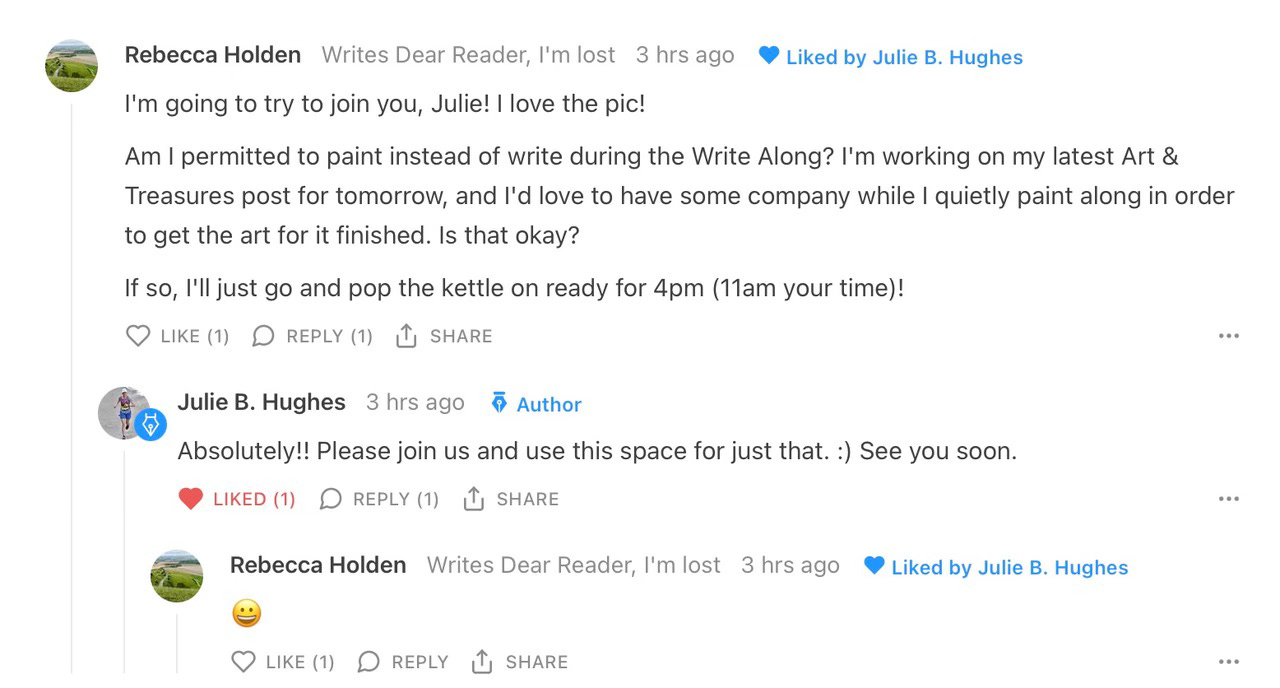
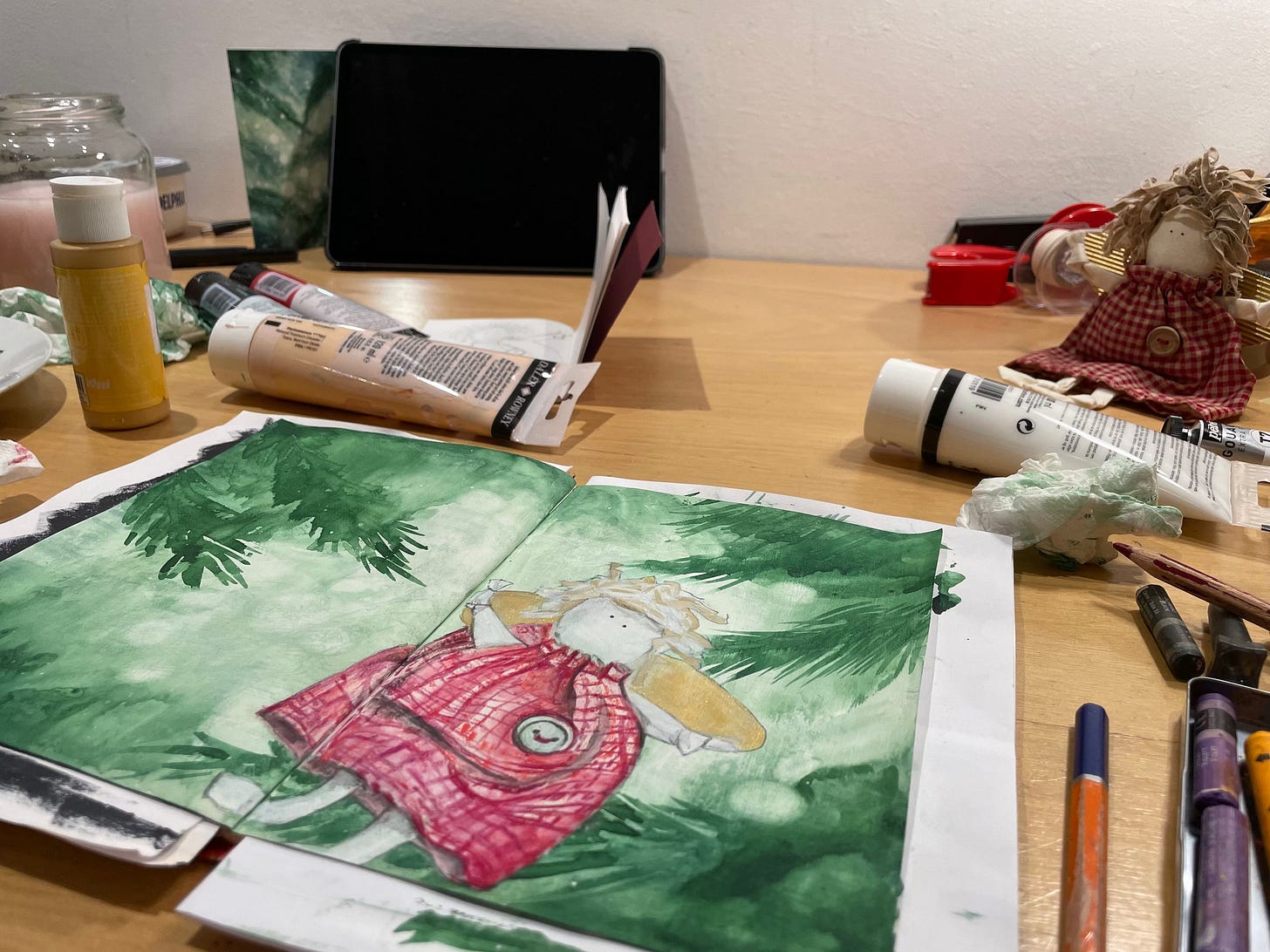
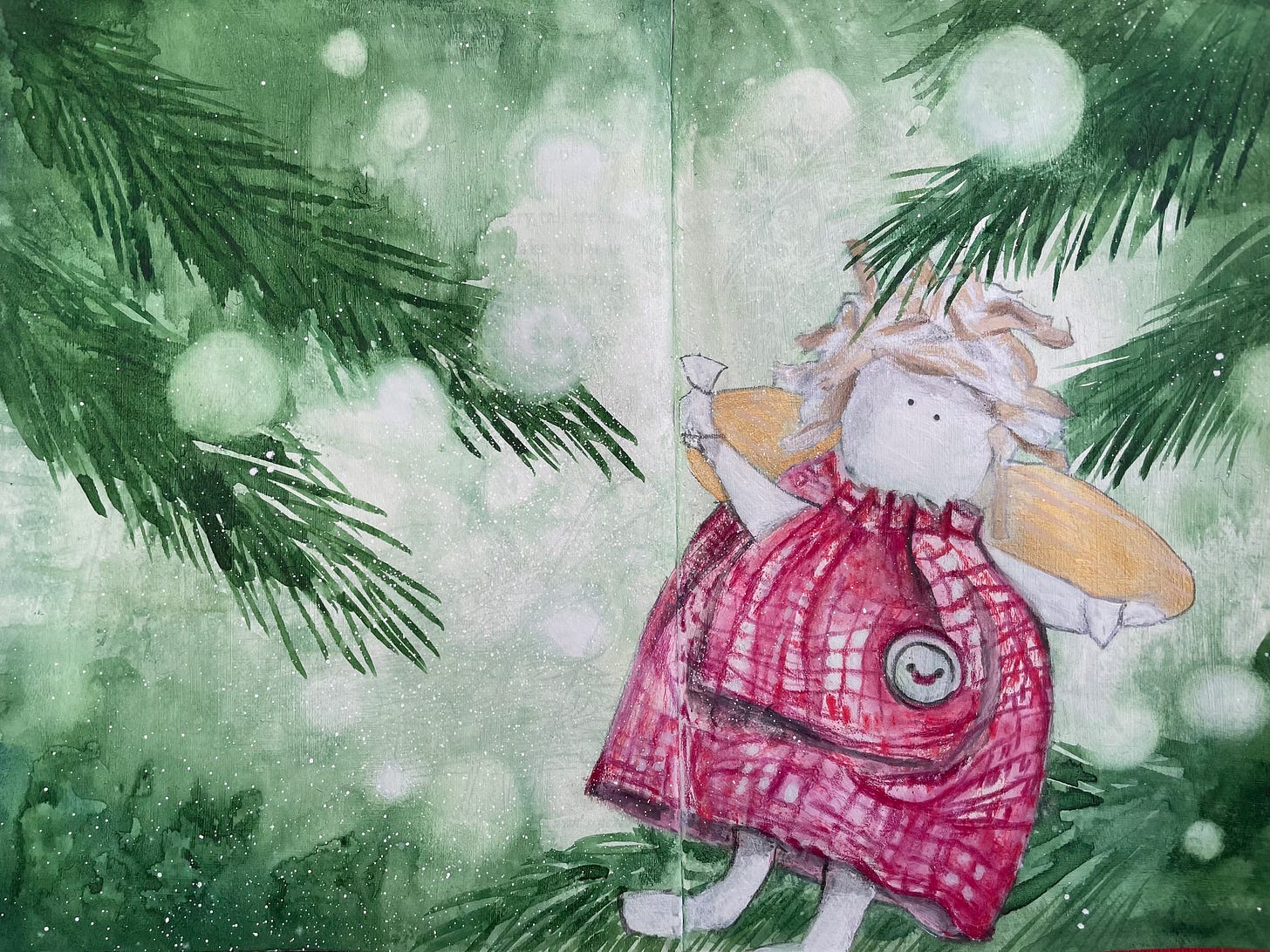




I think Mavis is glorious. And in paint and pencil, even more so! I really hope that one day, on your art series, you will invite us all to an exhibition of your work - paint, pencil, even glass. This side of Rebecca the writer really turns you into a Renaissance woman. Next, you will be writing music and then singing the lyrics or playing the melody on an instrument. I fully believe you have a musical trump card up your sleeve... Yes?
A lovely coddywomple through your Christmas memories and thank you for including me. Happy NY!
Awww,Rebecca, you did it again. Another lovely thing that made these old tired eyes shed a few tears. I didn't know I even had cockles in my heart anymore, but you have warmed them back to life. Seems to me, that with all the art you have created for this project, and all the accompanying stories, you have a highly desirable book to reproduce and publish. You could sell this in a minute. It is true! PS I loved the video, The frog's voice is so adorable! PPS Your kind mention really got to me. Just when I was feeling especially vulnerable and less than confident, I read that and wept. Thank you so much.